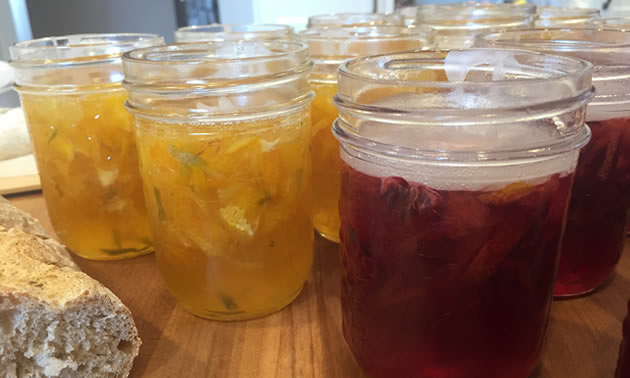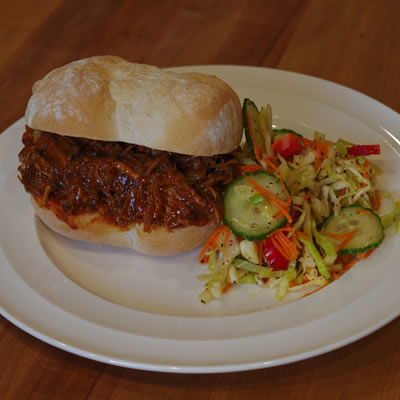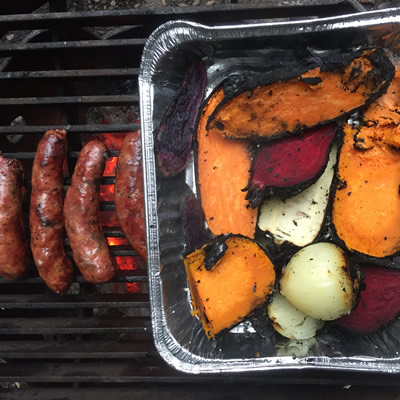Seasonal marmalades: Blood orange and lemon-lime
Citrus season is perfect for making marmalade
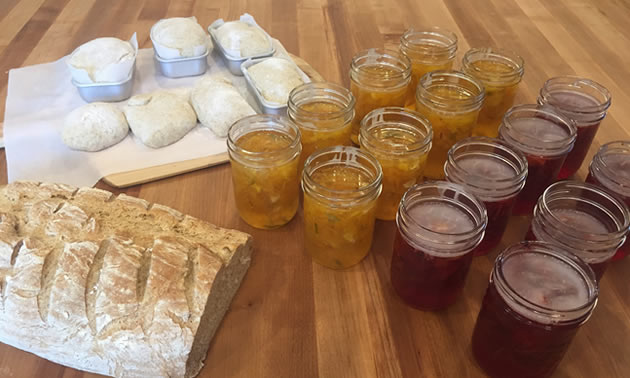
By the time the middle of March rolls around and we adjust our clocks forward, we’re pretty much done with winter. Unfortunately, winter’s not done with us. We need a project.
There is not much fresh fruit choice this time of year in the Great White North, but it is perfect citrus season in the grocery store. I decided to make two kinds of marmalade: blood orange and lemon-lime.
“Look, Grandpa, this orange has a belly button!” my granddaughter said.
“Yes, and that’s why we call them navel oranges,” I replied.
We made fresh bread and two kinds of marmalade: belly-button orange marmalade with lemon and lime, and marmalade from blood oranges that turned out the color of strawberry jam. Marmalade with lime is uncommon but I like the pop lime adds to the flavour. Blood orange marmalade is mellow and sweet. If you are not a fan of bitter marmalade, carefully remove the white pith of the skin underlayer. If you like bitter, leave half of it attached to the peel.
A note regarding measurements. When I bake, I use a metric scale and weigh the ingredients––even water. The recipe that follows is based on the pectin manufacturer’s tested recipe, given in imperial measurements.
Equipment
- Stainless steel 2-gallon pot
- Wooden spoon
- Metal skimmer or ladle
- 12 250-mL jars and lids
- Canning funnel
- Cutting board
- Vegetable peeler
- French knife
- Paring knife
- Paraffin wax (about 1 pound or 500 grams)
- Cast iron pan to heat paraffin
Ingredients for blood orange marmalade
- Six blood oranges
- One packet of Bernardin original (powdered) pectin
- 6 ½ cups white sugar
- 2 ½ cups water
- 1/8 teaspoon baking soda
- Melted paraffin wax
Ingredients for lemon-lime orange marmalade
- 2 lemons
- 2 limes
- 4 navel oranges
- One packet of Bernardin original (powdered) pectin
- 6 ½ cups white sugar
- 2 ½ cups water
- 1/8 teaspoon baking soda
- Melted paraffin wax
Method for both types of marmalade:
1. Sanitize jars and lids in the dishwasher on high heat. Remove and place upside down on a clean tea towel.
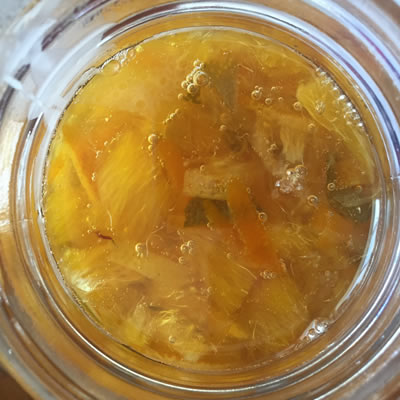
2. Wash, rinse and dry fruit.
3. Use a vegetable peeler to remove rind from fruit in long strips.
4. Cut rind crosswise in fine julienne.
5. Bring 2 ½ cups of water to boil, add 1/8 teaspoon baking soda and citrus rind, and simmer for 20 minutes.
6. Peel white pith from the oranges and separate the fruit from the membrane with a paring knife.
7. Dice fruit and squeeze the juice from the remaining membrane into a large measuring cup. Your target is 2 ½ cups of additional fruit to add to the rind mixture.
8. At 20 minutes add fruit, sugar and pectin to the pot, increase heat and return water to a boil; simmer 10 minutes.
9. Shut off heat, skim and remove foam with a ladle or stainless steel spoon. (Keep this foam––it should be the first thing you sample while the marmalade is cooling.)
10. Carefully pour hot marmalade into jars leaving 1/2 inch (1 centimetre) of head space. (Using a canning funnel makes this job easier.)
11. Carefully spoon hot melted paraffin wax into the jars, covering the marmalade with ¼ inch (½ centimetre) of wax. (Be extremely careful with paraffin, heat it on low, and handle it carefully. It is flammable and you risk contact burns.)
12. Cool marmalade and reseal with a tablespoon of melted paraffin swirled around the inside edge of the jars.
Ideally, bake bread the same day you make marmalade. If you time it right, fresh bread will come from the oven just as the marmalade is cooling. That way you can have a slice of fresh bread with a bit of blood orange marmalade for afternoon coffee break––like we did.
